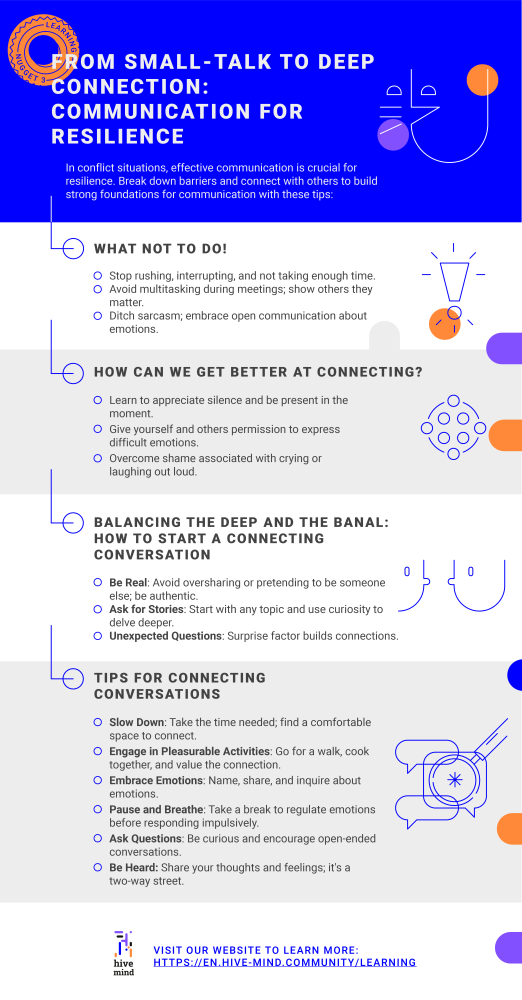What not to do!
As a political marketing major, I have been taught that most communication is persuasive. It is a game; it is transactional; it's about winning; it's about how you present yourself, and in the worst-case scenario – it is about showing your position in the hierarchy. Later, I learned the importance of connecting with other people for individual well-being. Some conversations can help us relax and restore balance so that we can see the perspectives of others more openly. In order for this to happen, some conditions and practices must be put in place.
How we're not great at connecting.
What do your conversations usually look like?
In general, we rush, interrupt, and don’t take enough time. We have all developed some bad habits. Even if times are calm, our meetings are accompanied by our mobile phones or TVs. We are multitasking, rarely showing other people how important they are to us or how much we need them. We don’t know what to do with silence. We give unsolicited advice. We hide behind sarcasm to cover excitement, joy, or disappointment. We don’t know how to talk about difficult emotions. We are ashamed of crying or laughing out loud. We are proper to the point of forgetting how to connect with others.
Tips for connecting conversations.
We tend to know what we are doing wrong, but sometimes, it is hard to imagine where to start changing the usual practice. Here are some practical tips:
Don’t rush, slow down and take as much time as needed; find a comfortable space to just be together. With some people, it can be 15 min; with some it can be 3 hours.
Maybe even go for a walk or cook together; it’s ok to do something pleasurable; just see the value of connecting and talking to each other too.
Let yourself feel emotions. Name them, share them, and ask about them!
Emotions are okay - what you choose to do with them is the key!
If the conversation is hard, and you feel it’s too hard to regulate your emotions, take 5 (or 20) and breathe. Instead of reacting impulsively, closing and distancing yourself, or going into aggressive mode, give yourself a moment.
Ask questions! Be curious!
Let yourself be heard, too.
It is often difficult to connect when times are tough. For many of us, asking for attention and time can be challenging. However, true resilience relies on being with other people and asking for support. The ability to connect with others is made possible by knowing how to have a conversation.
Topics for Connecting Conversations.
You might wonder what kind of topics to have. Any will do; the trick is to be real. Not overshare, not pretend to be somebody else (for instance, someone who cares less), but exactly as you are at that point. A good starting point is asking for stories. Then, use your curiosity and the power of open-ended questions to get deeper.
A usual “How are you?” is not something that really opens anybody up.
To help, we’ve prepared a few ideas so you can start with something unexpected. The surprise factor is great in building initial connections:
When did you last have ice cream? What was the occasion?
If you could instantly master any skill, what would it be and why?
If you could travel to any place in the universe, where would you go and what would you do there?"
What's the most unusual food you've ever tried, and what did it taste like?
What's the most challenging or adventurous thing you've ever done?
If you could swap lives with someone for a day, who would it be and why?
Imagining yourself as a cookie, which one would you be?
If you had a choice to be born anywhere and anytime, where and when would you prefer to be born?
When you feel alone, or you see somebody who looks in need of some human connection, just use one of the ideas!
Our free self-paced online Personal and Organizational Resilience Course shows how to connect with others and how to work with emotions in conversations. ✔️ You can sign up here:
Did you like what you've just read? here's a short and sweet summary of the key points in the form of a downloadable infographic:

